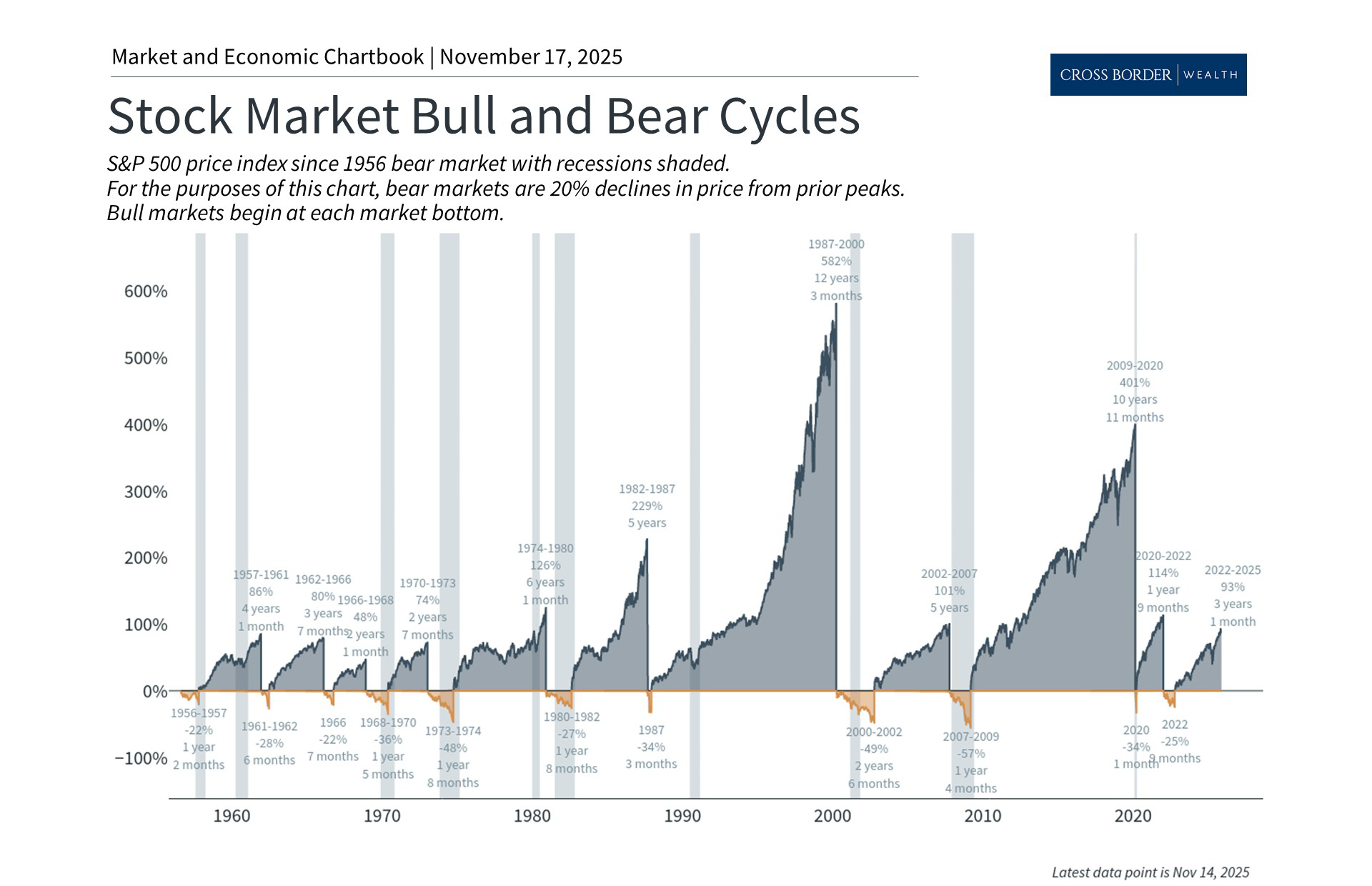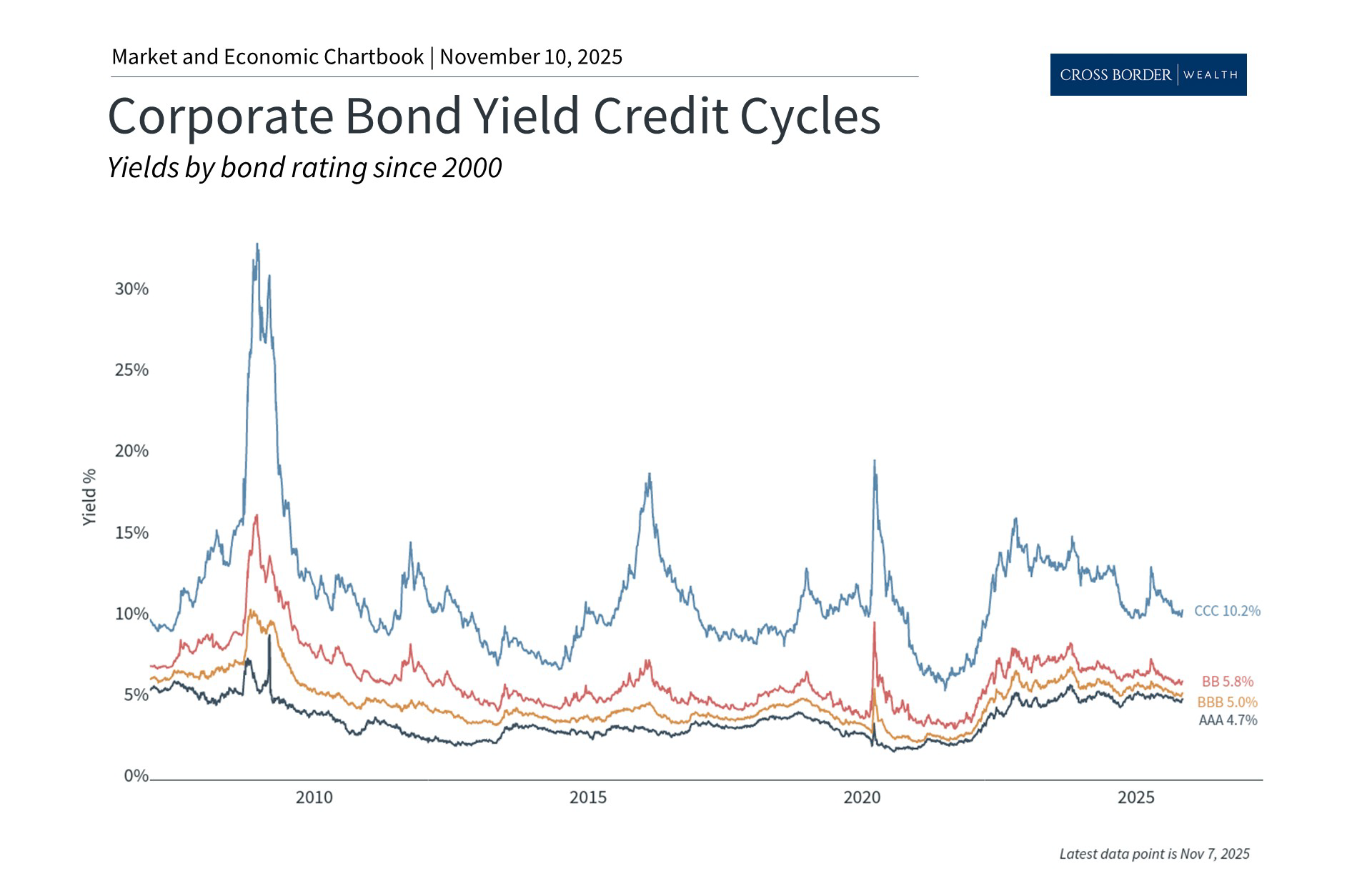What Flat Earnings Amid a Healthy Economy Mean for Investors
- Market Insights
- 4 mins
Corporate earnings have stalled despite economic growth. Should investors worry? Here, we delve into future earnings projections, gain insights from previous periods of weak growth, and advise investors what to focus on.
Key Takeaways
- The economy has been growing, but corporate profits lag. The S&P 500’s blended earnings growth likely declined in Q2, making for the third straight quarter of falling profits. Full year 2023 is also likely to see flat earnings growth.
- Despite the earnings challenges, two important facts to keep in mind: First, analysts anticipate an earnings recovery. Second, it's not unusual for corporations to experience temporary profit slumps.
- It is important to focus on corporate profitability as steady earnings growth is what drives stock prices higher over time. Remember, earnings can be volatile quarter-to-quarter and investors need to maintain a multi-year perspective.
Recent economic figures, which show improving inflation and steady GDP growth, continue to support the market rally. The S&P 500 has gained over 20% with dividends this year and is now only 4.5% below its early 2022 peak. The Nasdaq Composite and the Dow Jones Industrial Average have returned 37% and 8%, respectively. These are sharp reversals of last year's market trends and serve as a reminder that conditions do not need to be perfect for markets to turn around if conditions are moving in the right direction. At the same time, investors should always be prepared for periods of uncertainty. What long-term trends should investors be aware of today?
The economy is growing steadily thanks to consumer and business spending
 |
The recent GDP report for the second quarter showed that, adjusted for inflation, the U.S. economy grew at a healthy pace of 2.4% quarter-over-quarter. Not only was this better than many economists expected, but it represents an acceleration from last quarter's 2.0% growth rate. Despite experiencing two consecutive quarters of negative growth a year ago and the many recession forecasts at the start of the year, the economy is growing steadily. Among many factors, this is due to robust consumer spending and a rebound in business spending as households and corporations adjust to the inflation shocks of the past two years, as shown in the accompanying chart that breaks down the components of GDP.
However, these improvements have not yet appeared in corporate profits. The corporate earnings season for the second quarter is halfway through and about 80% of S&P 500 companies are reporting positive earnings surprises while 64% have positive revenue surprises, all according to FactSet. However, this is due to very low expectations among Wall Street analysts. All told, blended earnings growth for the S&P 500 likely declined in the second quarter, making for the third straight quarter of falling profits.
For the full year, 2023 will likely experience flat earnings growth. According to Refinitiv, the current consensus earnings-per-share estimate for 2023 is just under $214, compared to $215 last year. If this occurs, it will be disappointing given the 7.8% average earnings growth rates over the past four decades. Despite these challenges, there are two important facts to keep in mind.
First, these same forecasts also anticipate an earnings recovery, possibly beginning in the fourth quarter. So, while growth in 2023 may be flat, growth over the next twelve months is expected to be a healthy 8%. Analysts also expect 2024 and 2025 to each generate 12% earnings growth. Although these numbers will likely come down, as they often do, this would be a healthy rebound after this year's earnings pause. Given the choppy economic environment over the past year and the rapidly changing conditions today, what happens over the next year should drive markets more than what's already in the rearview mirror.
Earnings growth has stalled in 2023 but could rebound
 |
Second, it's not unusual for corporations to experience temporary profitability slumps. Recent earnings downturns occurred during the pandemic recession, in 2019 during a period of slowing growth, in 2015 and 2016 when oil prices collapsed, and many other periods. Today, this is due to the ongoing recovery in inflation and the various factors that are impacting each sector.
Tech, for instance, has experienced sizable layoffs but also high demand for artificial intelligence-related hardware and tools. Financials are stabilizing after the banking crisis earlier this year and many of the largest diversified banks have benefited. Energy sector profits surged last year as oil prices jumped but this has turned around. All in all, eight of the eleven S&P 500 sectors are expected to experience positive earnings growth in the coming year.
One reason for long-term investors to focus on corporate profitability is that earnings growth is a fundamental component of stock returns. By buying a company's stock, investors have the right to share in profits. The value of this right to shareholders depends on the growth in the company's earnings along with market valuations. Over the long run, steady earnings growth is what drives stock prices higher. In turn, earnings depend on economic growth and controlling costs, which is why trends among consumers, businesses, and inflation are so closely followed by long-term investors.
Most sectors are expected to experience earnings growth
 |
This year's rally and potentially flat earnings growth make valuing the broad market more difficult. Most valuation measures use numbers based on either the trailing twelve months or the next twelve months, both of which encompass difficult economic periods. If earnings do accelerate after a temporary slump then current valuations will appear to be artificially expensive. Thus, it's important for investors to maintain a multi-year perspective in this environment, especially because earnings can always be volatile quarter-to-quarter. Focusing on the aggregate trends, while being aware of short-term events that distort the numbers, can help investors to see past temporary bumps and focus on their long-term goals.
The bottom line? Earnings are projected to be flat this year but the economy is growing steadily, inflation is improving, and most sectors are expected to rebound. In the long run, earnings growth is the most important driver of stock market returns which in turn help investors achieve their financial goals.
Cross Border Wealth is a SEC-registered investment adviser which may only transact business in those jurisdictions in which it is registered or qualifies for an exemption or exclusion from registration requirements.
Cross Border Wealth may discuss and display charts, graphs, formulas, stock, and sector picks which are not intended to be used by themselves to determine which securities to buy or sell, or when to buy or sell them. This specific information is limited and should not be used on their own to make investment decisions.
All information provided in this article is for educational purposes only and does not intend to make an offer or solicitation for the sale or purchase of any specific securities, investment, or investment strategies. Please ensure to first consult with a qualified financial adviser and or tax professional. Further, please note that while said information has been obtained from known sources which are believed to be reliable, none of these are guaranteed.
.jpg)

